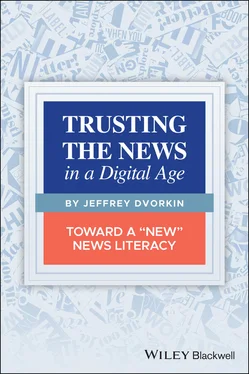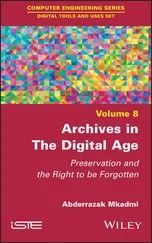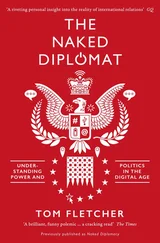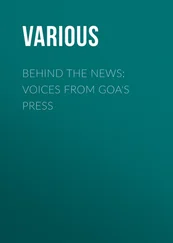Jeffrey Dvorkin - Trusting the News in a Digital Age
Здесь есть возможность читать онлайн «Jeffrey Dvorkin - Trusting the News in a Digital Age» — ознакомительный отрывок электронной книги совершенно бесплатно, а после прочтения отрывка купить полную версию. В некоторых случаях можно слушать аудио, скачать через торрент в формате fb2 и присутствует краткое содержание. Жанр: unrecognised, на английском языке. Описание произведения, (предисловие) а так же отзывы посетителей доступны на портале библиотеки ЛибКат.
- Название:Trusting the News in a Digital Age
- Автор:
- Жанр:
- Год:неизвестен
- ISBN:нет данных
- Рейтинг книги:4 / 5. Голосов: 1
-
Избранное:Добавить в избранное
- Отзывы:
-
Ваша оценка:
- 80
- 1
- 2
- 3
- 4
- 5
Trusting the News in a Digital Age: краткое содержание, описание и аннотация
Предлагаем к чтению аннотацию, описание, краткое содержание или предисловие (зависит от того, что написал сам автор книги «Trusting the News in a Digital Age»). Если вы не нашли необходимую информацию о книге — напишите в комментариях, мы постараемся отыскать её.
How to use critical thinking to discern real news from fake news in a Digital Age
Trusting the News in a Digital Age
Trusting the News in a Digital Age
Trusting the News in the Digital Age
Trusting the News in a Digital Age — читать онлайн ознакомительный отрывок
Ниже представлен текст книги, разбитый по страницам. Система сохранения места последней прочитанной страницы, позволяет с удобством читать онлайн бесплатно книгу «Trusting the News in a Digital Age», без необходимости каждый раз заново искать на чём Вы остановились. Поставьте закладку, и сможете в любой момент перейти на страницу, на которой закончили чтение.
Интервал:
Закладка:
It's not all a deterministic stimulus and response; there is still the “surprise” aspect of news motivation.
The news, especially reliable, trustworthy news, has as its main purpose the goal of acting as an early warning system for the public. This can be everything from a weather forecast to an impending disaster. It can be a newspaper that carries with it an editorial position about a dangerous politician. Or a helpful bit of advice to avoid a traffic jam on a highway on your way home after work.
In this instance, the news can both “surprise” and “delight.” The public consumes the news for the purpose of knowing what is happening around them – in their communities, in their countries, and elsewhere. This connectivity function of the news allows the public to share events and understanding with people to whom they may have had little exposure or knowledge. Do we know what life is like in Yemen? Can we understand the plight of the people there? Why should we know or care? The news – done properly –helps us understand and empathize with the plight of others. It can also serve to illustrate our own plight and condition.
The news is not one single approach or attitude. It tends to provide a palette of ideas, investigations, and entertainments. A mass‐market approach, such as in a daily newspaper or daily broadcast, provides a bit of everything in order to appeal to the broadest (and most lucrative) audience. In the digital age, we are able to specialize in our tastes: one medium for hard news, another for humor, still another for sports and entertainment. A diet of one dish alone may be what some people prefer. Most people prefer a more varied approach.
The Dominance of Images
We need to be aware that the power of visuals remains, even in an age of social media. Most people (especially older ones) still rely on TV news, especially for local news and information. YouTube has a similar appeal for younger audiences.
This is the implicit strength and the inherent weakness of visual journalism.
In television, the newsroom culture remains very strong, and the presence of dramatic footage often defines what is important. Complicated and nuanced stories usually get overlooked or avoided entirely. If the visual component is strong and compelling, that will often determine whether a story is included in a newscast.
The economics of TV journalism are important, especially in the US where much of the fundamentals and the esthetics of news comes from, even if most news stories originate from local newspaper reporting. Pictures matter in all journalism and especially on television.
In a ground‐breaking study of TV news audiences, entitled We Interrupt This Newscast , the authors explain how TV newsrooms became increasingly successful by drawing in larger and larger audiences. To do that, they looked to a generation of news consultants who showed them how to maximize both audiences and profits.
There are more than a few myths about the TV audience, the authors claim.
Myth #1:It is more important not to lose an audience than to attract one.
This refers to the belief that viewers surf channels rather than stay on a single broadcast for its duration, which has led to a series of techniques that promise to deliver exciting stories and then hold off on reporting on them until later in the newscast. This assumption that viewers are inherently disloyal is wrong. Surveys show that most viewers of TV news commit to a particular newscast and stay with it for most of the broadcast, according to the US‐based Radio and Television News Directors Foundation (RTNDF; https://www.rtdna.org/research).
Myth #2:TV news requires stories that shock or amaze.
Wrong again. RTNDF research indicates that most people would prefer problem‐solving in a newscast as opposed to stories about crime, violence, or disasters.
Myth #3:Immediacy is most important.
This underestimates the curiosity and the interests of the TV audience. News organizations create a sense of moral panic around certain local issues, especially when they may concern personal safety, health issues, or disaster scenarios. In fact, the recent decline in TV news‐watching may be due as much to the rise of Internet news as to the overabundance of anxiety‐related stories. This is due to what is called “compassion fatigue.” In a memorable phrase, the American‐British poet T.S. Eliot once suggested in the poem “Burnt Norton,” that “human kind cannot bear very much reality” (1936). The poet did not say that we cannot bear reality per se; nor did he say that we cannot face certain realities. A pure diet of bad news may be more than one can – or should – bear. Yet it remains the most important and most sought‐after quality of the media landscape. It is that quest that makes the news itself so important and so vulnerable at the same time.
We are now in an era of a broken economic model, even though the need for reliable information has never been greater.
The advertising that used to pay for journalism has been de‐linked from traditional media. The rise of digital media has forced media companies to rethink how to find a method of delivering news that pays and that can satisfy both the public and the people who want to invest in media organizations.
One way is to go down‐market. That may satisfy media business managers. But it only heightens the public's dissatisfaction and distrust of the media. As the Internet allows for expressions of discontent, the effect on the business model of traditional news organizations has increased. Journalism.org annually tracks how well (or poorly) mainstream media are doing, both in terms of their finances and their credibility with the public at large.
This may be an age of great journalistic ventures, partly because the times demand it. In the age of Trump and Brexit, we can find some great journalism alongside the less well‐regarded. In an era in which so‐called “fake news” has been identified as a dangerous but growing tendency, some news organizations, notably The New York Times and The Washington Post , are producing some of the finest journalism seen for many years.
As Professor Charlie Beckett (2017) has written, “This may be the best time for journalism (because) of Trump.” Traditional news organizations, such as major newspapers and network broadcasters, are producing some of the best journalism in a generation. They are taking advantage of what the Web can offer and combining it with their own deep values regarding civic engagement and responsible journalism. Beckett calls this “networked journalism,” connecting different media and various platforms to serve the public's growing need for reliable and literate information.
New Ways of Doing the News
The inventiveness necessitated by the advent of digital media is appearing constantly. Thanks to the Web, there are great experiments in new journalism forms. Digital media strategist Jon Bernstein ( http://jonbernstein.co.uk/; 2009) in the UK names five of them:
Interactive infographicsThis allows the public to do its own analysis of the data. The New York Times is especially good at this.
Crowdsourcing.The inherent democratic values of the Web allow for the public to identify stories it feels needs more and better coverage. It is willing to pay for this.
PodcastingThe success of investigative reporting via podcasting has created a new journalistic form especially with Serial. ( https://serialpodcast.org).
Читать дальшеИнтервал:
Закладка:
Похожие книги на «Trusting the News in a Digital Age»
Представляем Вашему вниманию похожие книги на «Trusting the News in a Digital Age» списком для выбора. Мы отобрали схожую по названию и смыслу литературу в надежде предоставить читателям больше вариантов отыскать новые, интересные, ещё непрочитанные произведения.
Обсуждение, отзывы о книге «Trusting the News in a Digital Age» и просто собственные мнения читателей. Оставьте ваши комментарии, напишите, что Вы думаете о произведении, его смысле или главных героях. Укажите что конкретно понравилось, а что нет, и почему Вы так считаете.












